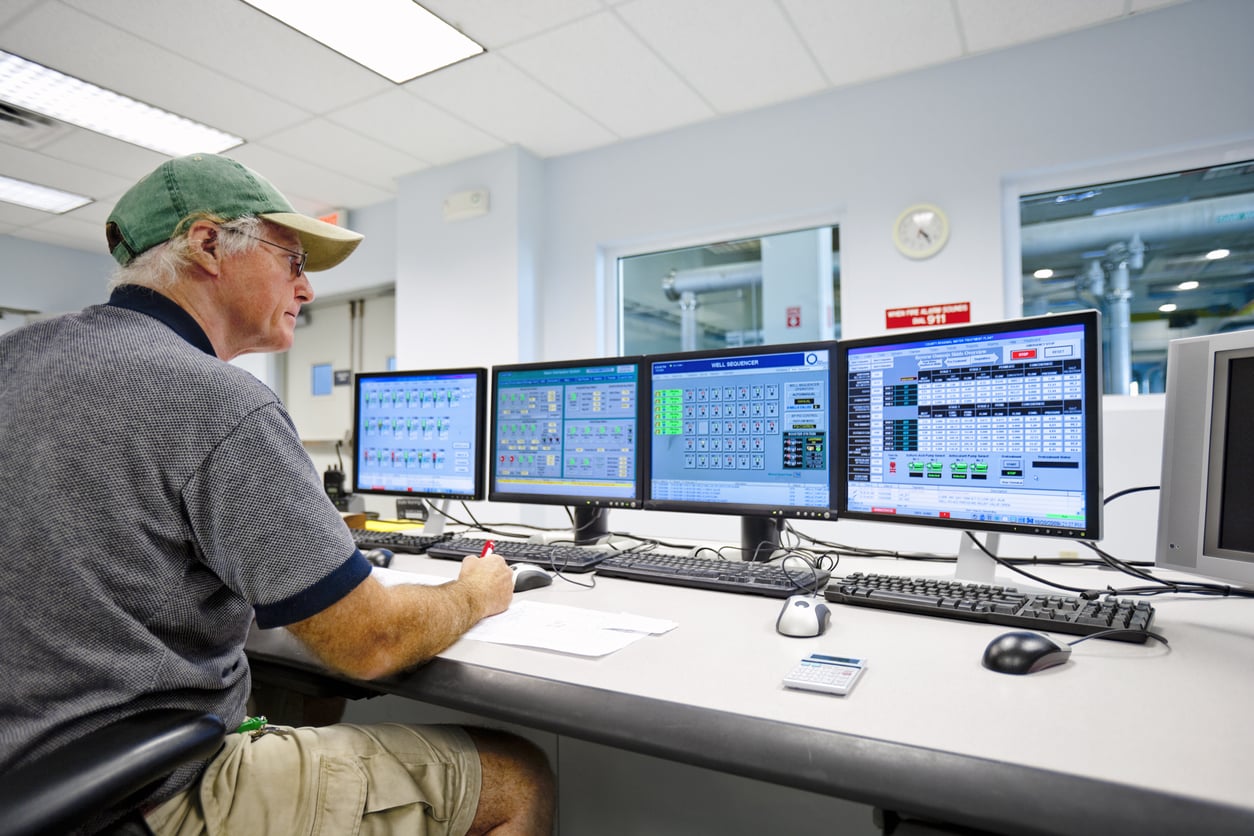- Introduction
- Who's a Design Engineer?
- Design Engineer job description
- Design Engineer - Roles and responsibilities
- What does a Design Engineer do?
- Design Engineer Salary Trends in India and the USA
- A Day in the life of a Design Engineer
- How to become a Design Engineer?
- What are the advantages of a Design Engineering Course?
- FAQ
To become a design engineer firstly you’ll have to be familiar with the idea, development and management of projects in various sectors comparable as production and the built environment, materials, software program, elements, machinery and vehicles.
Introduction
Design Engineers are experts in engineering design, they use their skills and brain to produce designs that are both visually pleasing and functionally sound. They’re employed by different organisations in the Manufacturing, Consumer Goods and Automotive industries or may work for a design consultancy.
Who’s a Design Engineer?
Engineers who examine, research and develop ideas for new products are referred to as Design Engineers. They also modify products or procedures to increase efficiency or enhance performance to provide better products.
Design Engineer job description
Design Engineers are in charge of creating blueprints and schematics diagrams for systems, machines, and equipment. They observe plans and models to make equipment, products, or models; in some cases, engineers might be given direct orders and could be asked to construct prototypes to test in certain situations.
Design Engineer – Roles and responsibilities
Roles
The Design Engineers are not only concerned with making products look good, safe and easy to use, but also they’re concerned that the product can be made cost-effective and efficient. To make a product some things can be kept in mind:
• Studying a design brief.
• Thinking of possible design solutions.
• Research about the cost-effectiveness of the design.
• Using computer-aided design (CAD) and computer-assisted engineering (CAE) software to create prototypes and viewing output.
• Collecting and analysing data from tests by software.
• Modifying designs and checking them.
• Make reports and present them to project managers and clients for their opinion or client feedback.
Responsibilities
Design Engineers have some key responsibilities. They’ve to perform several steps to do their job in a proper way.
• Designing manufacturing processes and products.
• Assessing product usability and safety.
• Make reports and send them to managers and customers.
• Design new engineering products and processes.
• Craft models and sketches of products using CAD.
• Analyse prototype data and check if required.
• Research new product ideas and styles.
• Upgrade existing products and processes.
• Maintain accurate records.
• Ensure products are user-and environment-friendly.
What does a Design Engineer do?
They design the manufacturing processes efficiently, including cost-effectiveness, user experience, easy to use, and environmental standards. A design engineer or a UI/UX designer also analyses data from tests on prototypes and crafts progress reports.
Design Engineer responsibilities include:
- Designing manufacturing processes and products.
- Assessing product usability and safety.
- Make reports and send to managers and customers.
Design Engineer Salary Trends in India and the USA
Salary in India: Avg 4LPA
The average salary for a Design Engineer is ₹4, 00,000, per year in India. It may vary according to places and demand.
Salary in the US Avg $79000
The average salary is $79000 per year in the United States and a $30000 cash bonus per year. It also varies according to place.
Design Engineer Salary: Based on experience
As a fresher or having less than 12 months of experience a design engineer can expect to earn an average salary (includes tips, bonus, and extra time pay) of ₹400000. One with 1-4 years of experience earns an average salary of ₹500000. A mid-career Design Engineer with 5-9 years of experience earns average earnings of ₹700000. Those with 10-19 years of experience earn an average salary of ₹100000. A seasoned design engineer (twenty years and higher), earns an average total compensation of ₹12 to ₹14 lakh.
If you have experience, you can lead to senior design positions in large organisations and then on to posts such as creative director. Design engineers can also be on-boarded into management roles such as project management and new business development.
Design Engineer Salary Based on skills
An average Skill Lync Design Engineer salary in India is Rs. 3.4 Lakhs for employees with experience between 2 years to 3 years. Design Engineer salary at Skill Lync ranges between3.1 Lakhs to3.8 Lakhs.
Skills required to be a Design Engineer
Other than a Mechanical Engineering degree and analytical thoughts, a capable design engineer also should have some essential soft abilities. They’ve strong attention to detail and the ability to deliver tasks effectively and on time. Numerous technical and non-technical skills are required for a design engineer.
Design engineer skills –
Software skills: Engineers work with complex CAD software programs to draft their merchandise and specialized gadgets to create prototypes. A better understanding of these tools can help a design engineer understand their raw materials, product design and strategies better.
Creativity: Science and technology are the basis of everything. Besides technological knowledge they must rely on their own creativity, ingenuity and endurance to find solutions to problems via making some unique designs.
Technical skills: Knowledge of AutoCAD and other drafting software is a requirement for this job. A knowledge of some manufacturing equipment is also useful depending on the industry.
Analytical thinking: They constantly change small details of a prototype or a system flow that can have large impacts. Identifying problems, troubleshooting, developing and implementing solutions require detailed analysis.
Time management: Depending on the priority they should divide the work accordingly. They should be able to prioritize tasks, adhere to deadlines and create timelines for work completion.
Communication: Take ideas and requests from people in other departments—research and development, marketing, customer relations—and turn those ideas into physical reality. They must have the capability to explain technical parameters to non-technical co-workers in clear terms.
Teamwork: They should collaborate with designers, floor people, supervisors, financial experts and advertising teams to create and develop products. They ought to be able to delegate, accept responsibilities and share ideas without difficulty.
- A creative flair and design ability
- Good visual and spatial awareness
- Attention to work in a detailed manner
- Good written and communication skill
- Good commercial awareness
- Need very good project management skills
- Time management and organizational skills
- Subject specific technical knowledge and expertise
- IT and CAD knowledge
- Analytical and numeracy skills
- Creative problem-solving ability
- Ability to work in a team
- Leadership and negotiation skills
A Day in the life of a Design Engineer
Create 3-D models in solid works and drawings to set standards, prepared for manufacture/assembly, even as keeping in mind budgets/cost.
Design the solution based on the essential engineering concepts that they have learned and the experience that they have gained. Then construct it, test it, and then enhance it before it goes to production. Sometimes because of schedule constraints, all of their improvements can’t be incorporated, therefore they must make decisions based on schedule and product performance.
Liaising with vendors and manufacturers to gain fast prototyping with help from additive production groups.
They work to develop and test devices used in engines, equipment and other machines. Their duties can include:
- Observing and troubleshooting devices
- Recreate design for machines and mechanical tools which create problems in the testing phase.
- Developing and testing new mechanical prototypes with the basics of the design.
How to become a Design Engineer?
If you are thinking of starting your career in Design Engineering then you have to be aware of some basic things. First you have to grab your degree in mechanical engineering because design engineering is a domain of mechanical engineering, then you must have knowledge of design engineering. If you don’t have the Mechanical Engg. degree or Industrial Design degree then you can’t move forward with your dream job.
So first you have to complete a bachelor’s degree in Mechanical Engineering or Industrial Design, or a double degree.
Besides that IT and CAD knowledge and analytic skill will help you to understand the subject.
Design Engineer Career Path
There are so many steps of a design engineer to grow their career. From fresher to senior level there are so many ways.
L2: Design Engineer
Designation- Associate Design Engineer, Design Engineer II (3)
2 – 4 years of experience
Annual Salary: Yearly ₹5, 00,000 avg.
L3: Senior Design Engineer
Designation: Design Engineer III, Mid-level Design Engineer
2 – 4 years of experience
Annual salary: Yearly ₹7, 02,283 avg.
L4: Lead Design Engineer
Designation: Staff Design Engineer
5 – 7 years of experience
Annual salary: Yearly ₹17, 65,724 avg.
L5: Principal Design Engineer
Role: Senior Staff Design Engineer
8+ years of experience
Annual Salary: Yearly ₹35, 81,291 avg.
L6: Senior Principal Design Engineer
Designation: Phd Design Engineer
8+ years of experience
Annual salary: Yearly ₹26, 92,559 avg.
L7: Director of Design Engineering
8+ years of experience
L12: Chief Design Engineer
No years of experience reports
Annual salary: Yearly ₹14, 52,283 avg.
What are the advantages of a Design Engineering Course?
In this course we can learn about all the basic principles of design engineering and also will be familiar with some design related software tools like CAD, Solid works etc. which will be helpful for the future. This course can groom a student with proper guidance which helps students in their working environment.
- It brings out the innovative ability of the learner.
- It’s student-centered as learners play an active role in planning the sensible lesson and skills.
- It relates learners’ learning results to real-existence conditions.
- Encourages learners to become aware of the troubles around them.
For help with applying for engineering jobs and internships, take a look at engineering CV and cover letter templates for the job and cover letter templates for internships.
Qualifications and training required
Graduates will need a degree in a relevant engineering field such as design engineering, electronics engineering, commercial design, mechanical engineering and product design engineering
The quickest path to gaining chartered status is to take a Mechanical Eng degree, followed by a minimum of 4 years’ vocational training with an authorised organization.
Relevant experience can be helpful; many employers offer final-year project work, sponsorship, excursion work and industrial placements, which can provide valuable contacts and useful perception into the profession.
FAQ
- Which streams are eligible for Design Engineer?
Answer:
So, mainly students from the mechanical backgrounds are preferred for this job.
- What is the importance of a design engineer?
Answer:
Each and every product is made with a proper design and layout. So Design is necessary for every product, thus for a production-based organization a design engineer is always indispensable. These fields require Design engineers, like- mechanical, automobile industry.
- What is your CAD system of choice? And Why?
Answer:
Most of the industries prefer CAD software systems that are more suited to their workflows and design processes. So you can choose the CAD system to grab more opportunities.
- What is the job role for a Design Engineer?
Answer:
Mainly the research and design of a company’s new products and systems. They can modify or update the design to give better performance.
- What is the important skill to have as a Design Engineer?
Answer:
They must have knowledge of CAD software, creativity and communication skills and should also be from mechanical background.
- How does a Computer help In Designing?
Answer:
The designs can be made by computer software then it is visualized on the screen and any changes made can be visible properly on the screen. Also computers can calculate very fast with perfection. Thus optimum design can be made by computer software.
Test of a design is also easy by computer software.
- How can you brief a complex design to a non-technical person?
Answer:
An engineer can explain complex ideas and design in a very simple way without using technical terms just to explain the thought behind the design in an easy way thus non-technical person can also understand the purpose of the design.
Conclusion
After going through the blog we can conclude that Design Engineering is a good career path for freshers as well as experienced people who have a degree in Mechanical Engineering. The job in this role is mainly for the mechanical students. The Career path is also very good in Design Engineering. Anyone having a mechanical degree and some knowledge in design software tools like Solid works, CAD will be benefited in this role for future growth.







